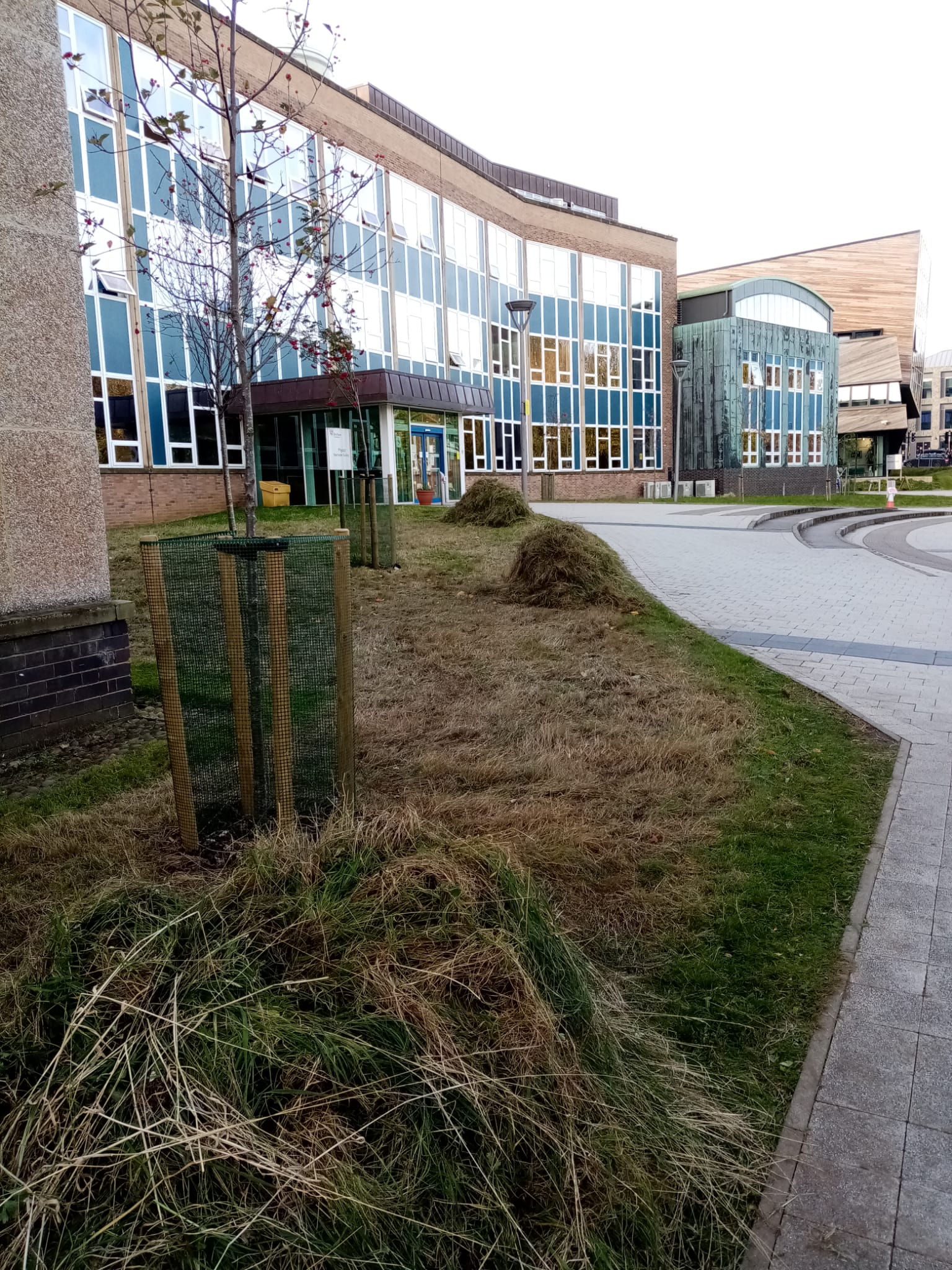Scything course update

We had a fantastic time scything the physics meadow last Saturday with our scything tutor Danny. As both an experienced scyther and conservationist, he was able to advise us on both the meadow management to promote diversity and the technique of scything! The department kindly supported this eco-venture by paying half of the course fee, for which we are extremely grateful.
If the grim reaper comes to mind, you aren’t alone and in fact the origin of the reaper is from the cutting of the grass in it’s prime to have the best quality hay i.e. cutting down a life before it’s time! Fortunately, we didn’t have any life ending in this session. We used Austrian scythes due to their adjustability and lightweight construction which enables anyone to be able to use them. This is in contrast to the old English scythes which are more powerful, but much heavier and generally made to fit the user.
The scythe swing takes some getting used to. It’s about using the core muscles, rather than the arms and remembering to keep the blade in contact with the ground. It’s not to be swung like a golf club. When the technique is perfected, you hear a ‘swish’ as the blade cuts through the grass and piles up into the windrow (row of cut grass). The blade swings silently on the return stroke and the pattern continues. Swish-break- swish – break - swish, the sound is rhythmic and peaceful. It’s quiet enough to hear the birds singing and the bees buzzing, but loud enough to hear your fellow scyther approaching behind you and to check they’ve seen you! This is more important when you’re kneeling to sharpen your blade which you do every few meters. This is because the efficiency of scything coming mainly from the sharp blade rather than the swing. In fact, a blunt blade tends to flatten the grass, as we quickly found to our horror. It’s more or less a one swing chance, once the grass is flat you can’t get your blade through it to cut it down. It simply glides over the top.
The last important thing we learnt was how to ‘peen’ or prepare the blade for sharpening. Peening draws the edge of the blade out allowing you to get a very sharp edge. There are two ways, with a peening pony and using an anvil. The peening pony has a jig to draw only the edge of the blade using a bit, which you hit using a hammer, which has the scythe blade in between. The anvil is trickier as it requires a good hammer stroke only to the edge of the blade in even overlapping strokes.
As this week progresses, you’ll see more and more of the meadow being cut and heaped into windrows (rows of cut grass) and later moved to haystacks. We’ve left it too late this year to make hay, but next year we hope to plan-ahead and turn the grass cuttings into hay for the botanical garden sheep. This means we will have to remove the ragwort and cut earlier when the weather is warmer and get a team of volunteers to help us turn and rack the cuttings. This year the cuttings are being removed and taken to the green waste composting to reduce the fertility of the ground and promote the growth of wildflowers next year.
A big thank you to the physics department for their continued and unwavering support of the eco group and the ongoing environmental initiatives. We love the can-do attitude which makes this possible. An additional thank you to all the volunteers who helped to create the meadow and carry out the meadow management.
Written by Rachel Goodband


/prod01/prodbucket01/media/durham-university/departments-/physics/teaching-labs/VT2A9034-1998X733.jpeg)